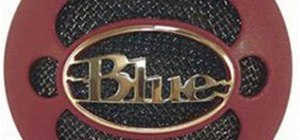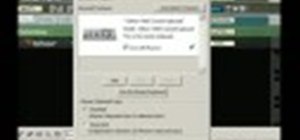Recently, Avid announced the upcoming release of Pro Tools HD Native, and caused a lot of stir in the audio community. There's plenty of information about this new gear out there, so I won't drop a spec sheet on you, just yet.
I do, however, want to talk about what exactly "Native" means, when we refer to digital audio.
Native? What's that?
When we use the term "Native" in digital audio, we're usually referring to a Digital Audio Workstation's (DAW) core set of features that come installed with it. This means no third party plugins or other software for functionality. So, for instance, the plugins and features of a new Cubase 5 install are the Native features of that software.
When we speak of Native with respect to Pro Tools, we're using much the same terminology, except for an added feature; hardware.
Pro Tools has always been known as a DAW that requires hardware to operate. This means that you can't start your Pro Tools software without the Pro Tools related hardware plugged into your computer. Many users know this from the LE line of Pro Tools, which includes interfaces such as the Mbox and the Digi002/003 etc. These versions of Pro Tools can be limited because they have a limited number of active tracks one can work with, and when recording, one must adjust for Latency.
In the Pro Tools HD world, these limits are greatly reduced, thanks to the processing of audio data happening on the Pro Tools hardware. This is the primary difference between a Pro Tools LE and HD system. An LE system and it's audio interface use the processing power of your computer to handle tracking, mixing, effects, and etc. An HD system makes use of HD hardware (a PCI card and audio interface), which handle the bulk of audio processing on the hardware, not in you computer's CPU. Now, don't be mistaken; you still need a powerful computer with plenty of RAM to get the job done.
A PT HD rig is enticing because it allows for much more powerful recording than your average LE rig. 192 tracks and 64 channels of Zero Latency recording sounds pretty good, right? Of course, this kind of power is costly, as well. The average PT HD entry level rig will run you around $10,000 (eep!). That keeps most at home users from making the leap.
What Avid have done with the new HD Native offering is make a step toward allowing the at home user to use the processing power of their computer to handle recording in Pro Tools. So, "Native" in this case means that your computer will be doing the bulk of the audio processing, not the Pro Tools hardware.
For a long time it was rumored that "Native" Pro Tools would mean that you could run any audio interface with PT that you wanted - but that is not the case. You will still need to purchase an HD Native PCIe card, which installs into your computer. This card will interface with your HD audio interface. There is some basic DSP (Digital Signal Processing) on the hardware, but the bulk of the processing will happen on your computer's CPU.
This is, of course, in contrast to most DAWs, which allow you to use any audio interface, and rely on the power of your computer. This includes Logic, Cubase, Sonar, and others. You can, however, use the new HD interfaces and HD card with other DAWs - Avid has said that Logic and Nuendo have been tested fully. This is enticing, being that you can switch from DAW to DAW, without having to move between audio interfaces. In the past, getting some DAWs to work with PT hardware has been a trial at times.
So, to sum it up, the faster your computer, the more capable your recording will be with PT HD Native.
It should also be noted that in PT HD Native, you will not be able to use TDM Plugins - TDM plugins are DSP plugins which only operate in PT HD - not in Native. You'll still be using RTAS plugins, which you are probably used to from most Pro Tools operating environments. This is a dealbreaker for some, and for others, a non issue. If you're already used to RTAS plugins, you won't have any issue with this.
Ok, ok - so do I really need it?
A lot of at home users will be asking themselves this question. The answer is, as always, based on what you want to do.
Do you need to record 64 tracks of audio at once, or do you have issues with Latency, or find that you are reaching the limits of your PT LE rig? If that's the case, HD Native might be good for you. However, for many users, HD Native will simply overstep the bounds of what they currently need to do. If you're simply recording some guitars, vocals, and other instruments, you probably don't need Native right now. You may also find that you'll get what you need when using another DAW and audio interface, and find that it matches what you need to do at home well.
In the end, it really depends on what you do at home or in your studio, and if you need the power that HD Native offers. Either way, this is a great new leap for the at home and mid-level engineer who needs powerful recording on a more healthy budget.
I hope this has been useful to you; feel free to leave me your questions!
-Brian
Just updated your iPhone? You'll find new emoji, enhanced security, podcast transcripts, Apple Cash virtual numbers, and other useful features. There are even new additions hidden within Safari. Find out what's new and changed on your iPhone with the iOS 17.4 update.






Be the First to Comment
Share Your Thoughts